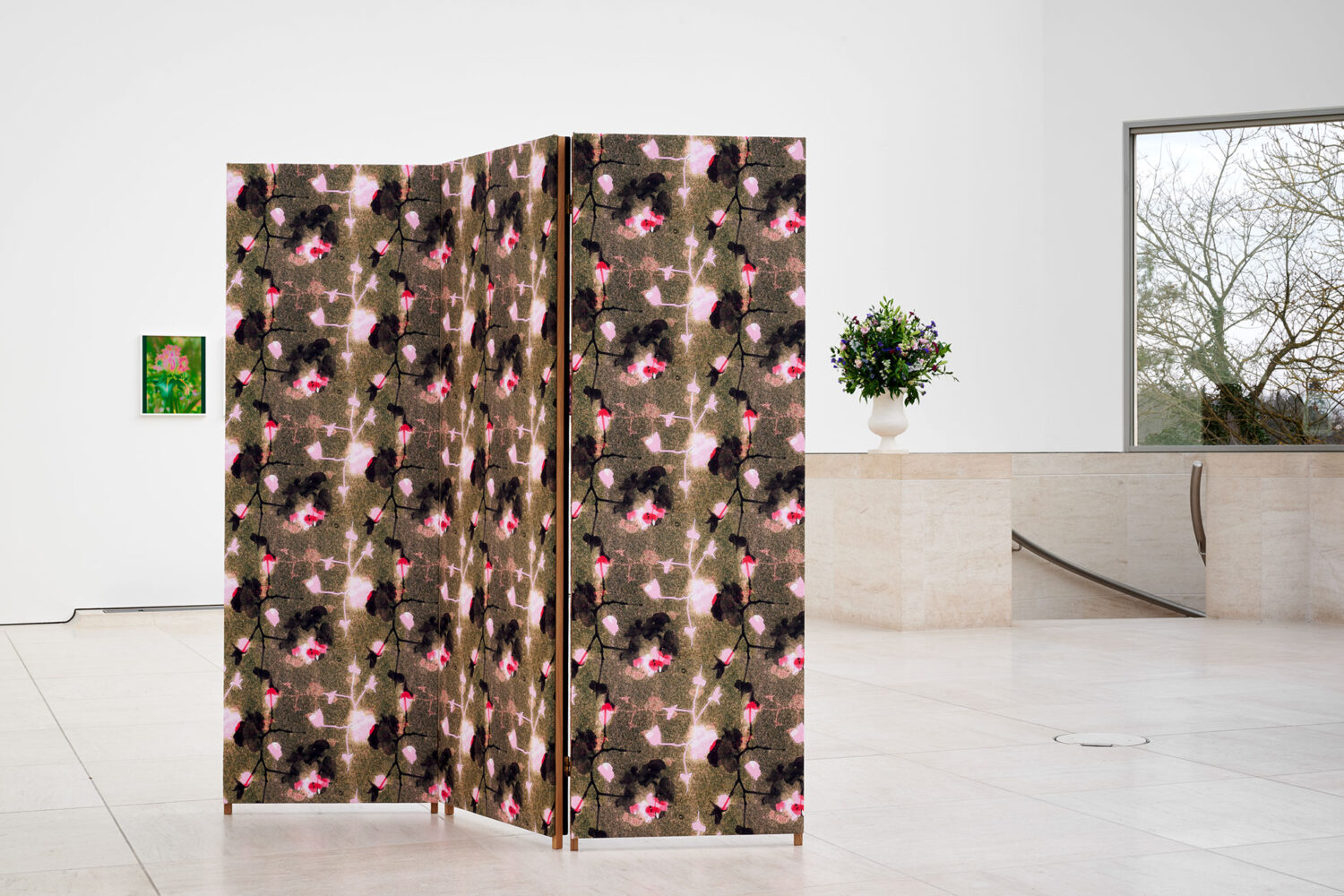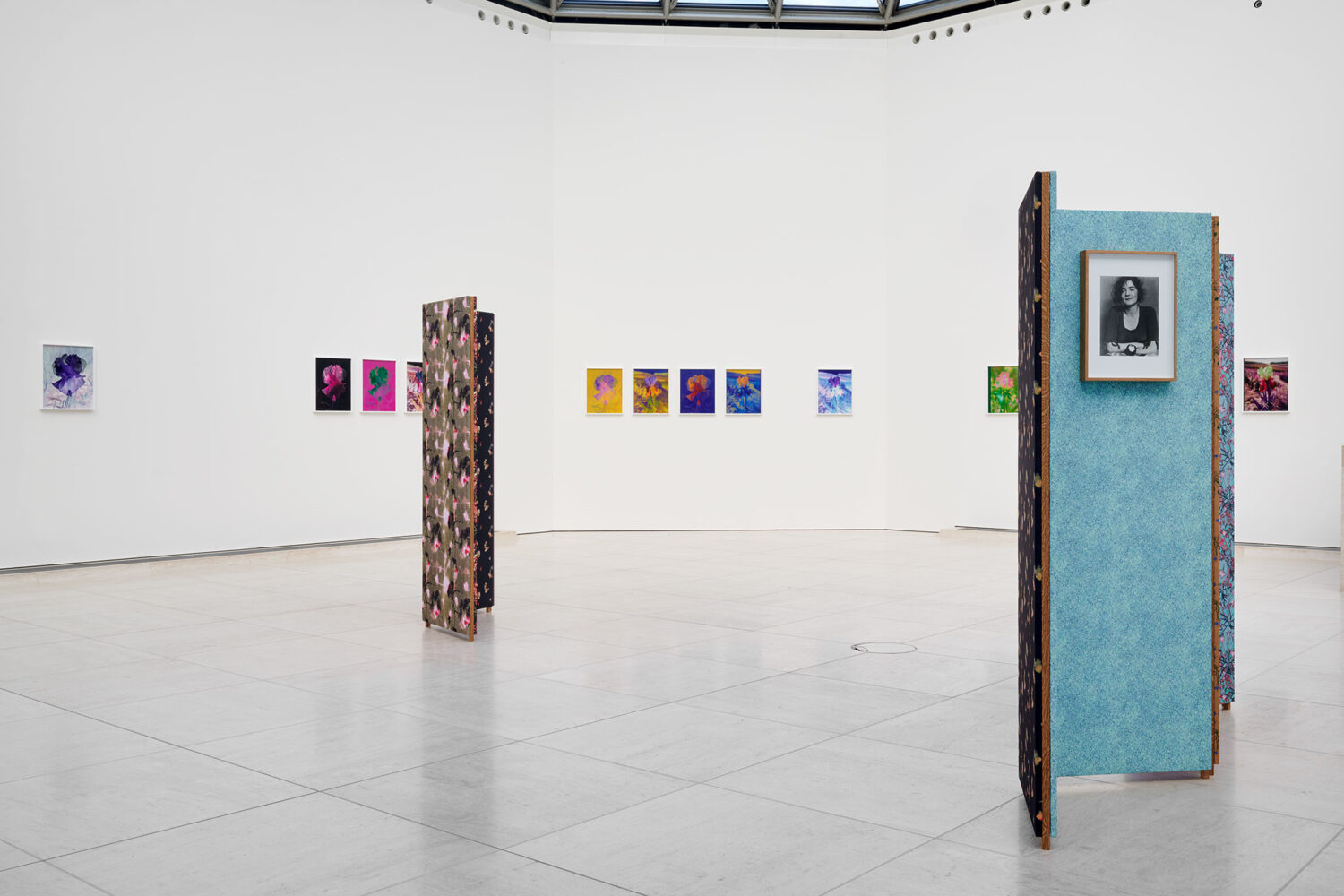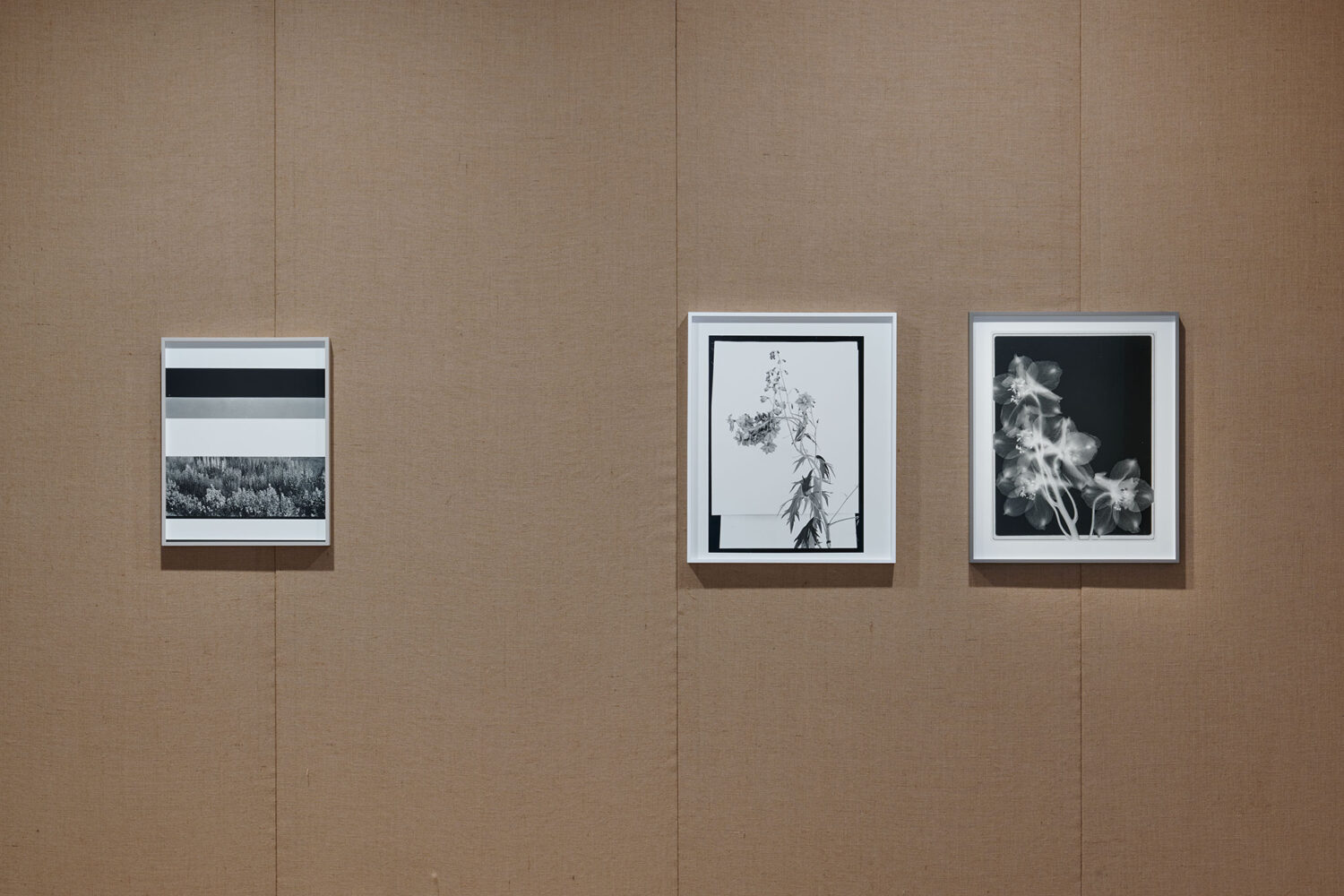Delphiniums, Ex-Wives, and an Eckhaus Latta Collab: Lisa Oppenheim’s Portrait of Edward Steichen
By Keshav AnandApproaching the gallery in which Lisa Oppenheim: Monsieur Steichen is installed, the first thing I notice is a vase packed with lush foliage and flowers. Light pours into the Henry J. and Erna D. Leir Pavilion at Mudam Luxembourg, making the leaves and petals glow. It’s so bright, the sunshine bouncing of the white walls, I have to squint as I enter. The glass-roofed space is part of a building designed by Chinese-American architect Ieoh Ming Pei, the Pritzker Prize winner behind the Louvre Pyramid. One bloom has fallen from the bouquet, lying beside the main arrangement. I watch as visitors, seemingly unaware of its status as an artwork, reach to pick it up, repeatedly intercepted by an invigilator in the nick of time. It turns out the floral arrangement is recreating one captured in a series of dye-transfer prints from 1940 by Edward Steichen, fallen flower included. Curator Christophe Gallois explains the flowers are being replaced throughout the show’s run, evolving, each time mimicking a slightly different colour combination from Steichen’s series.

Hailing from Luxembourg, Steichen was born in the small European country in 1879 before moving to the United States as a child. Across a prolific career, he shaped the visual language of the 20th century – first as a Pictorialist photographer, later as chief photographer for Condé Nast, and ultimately as Director of Photography at the Museum of Modern Art in New York, where his landmark exhibitions helped define photographic modernism. In addition to his pioneering career as a visual artist and museum professional, Steichen was also a renowned horticulturist. In June 1936, MoMA presented its first and only dedicated flower show, Edward Steichen’s Delphiniums, which exhibited, for one week only, plants Steichen had raised in Connecticut and then schlepped to the Museum himself.
Now at Mudam, through the show Monsieur Steichen, American artist Lisa Oppenheim reflects on the influential photographer and delphinium breeder’s life and work. Oppenheim, known for reanimating archival materials and forgotten techniques, approaches this history with both reverence and resistance. Her practice often returns to the overlooked or marginal, using material processes, from photography and weaving to dyeing, to probe and complicate ideas of authorship and memory.

When I asked Oppenheim what struck her most while researching Steichen’s life and work, her answer was immediate: “All the women in his life that made it possible for him to be who he was. A strong mother, sister, three wives and two daughters.” Oppenheim’s approach reshapes how we might have ordinarily viewed a towering figure of 20th-century photography. The artist doesn’t attempt to revise Steichen’s work so much as illuminate the blind spots around it. In Monsieur Steichen, she recovers the “lost threads” and “discarded ideas” of his practice – not just in a technical sense, but emotional, relational, and historical.
Beyond the archival and material, the register of the show is set by the inclusion of portraits of Steichen’s three wives, Clara, Dana, Joanna, and his mother, Marie. Oppenheim elaborates: “I wanted to make their presence physical in the exhibition space since they were all very much in the background in his own life. And the reason why he got to be the artist, the genius, was because they were taking care of everything else.” The gesture isn’t particularly loud, certainly at first glance, but it manages to change the balance of the room. The presence of these instrumental women is no longer secondary but rather it anchors the entire narrative.

Displayed across the space’s walls, photographs of the now-extinct iris hybrid ‘Monsieur Steichen’ are uncanny. This unique variety of iris was created in 1910 by a French amateur botanist as a tribute to Steichen. Revived by Oppenheim through a combination of dye-transfer printing, a technique Steichen used in the 1930s and 40s, and AI, the images sit somewhere between past and present, science and imagination. The exhibition fluidly traverses media: alongside the photographs, there are textiles developed in collaboration with fashion designer Zoe Latta, of Eckhaus Latta fame, using motifs from Steichen’s fabric designs for Stehli Silks in the 1920s. These include nearly abstract gravel patterns and delicate floral forms that appear almost like botanical illustrations.
In the show, the fabrics exist in the form of various concertina screens, room dividers, functioning both as visual interruptions and subtle echoes of domestic interiors – partitions that suggest intimacy, care, and the unseen labour behind the scenes. Expanding on her interest in these textile works continuing their life as garments, Oppenheim shares: “Steichen did not see a problem moving freely between ‘fine arts’ and ‘applied arts’ or ‘commercial’ work. For him, it was all part of the same thing so I thought I would inhabit this part of his practice. There is nothing more Steichen than having textiles in a museum exhibition and having them on a runway at the same time.”

Descending into the darker, cooler room below, my eyes need a moment to adjust. Here, Oppenheim presents a body of work that feels both precise and intuitive, including a series of studies that offer a glimpse into the artist’s creative process. They combine photographs Oppenheim took in Steichen’s archives and photographic experiments she conducted in her dark room. Outside, the exhibition takes root, literally. In the museum’s surrounding moat, Oppenheim has planted Eduard’s Garden, a living installation of delphiniums, echoing Steichen’s own passion for the flower. “Because gardening was such a central part of his identity and practice as an artist it was one of the first parts of the exhibition I knew had to happen!” she tells me. Much like the show as a whole, it’s an homage that insists on growth and transformation.
Lisa Oppenheim: Monsieur Steichen is on view at Mudam Luxembourg until 24 August 2025.
Feature image: View of the exhibition Lisa Oppenheim: Monsieur Steichen, 14.02 — 24.08.2025, Mudam Luxembourg – Musée d’Art Moderne Grand-Duc Jean. Photo: Mareike Tocha © Mudam Luxembourg